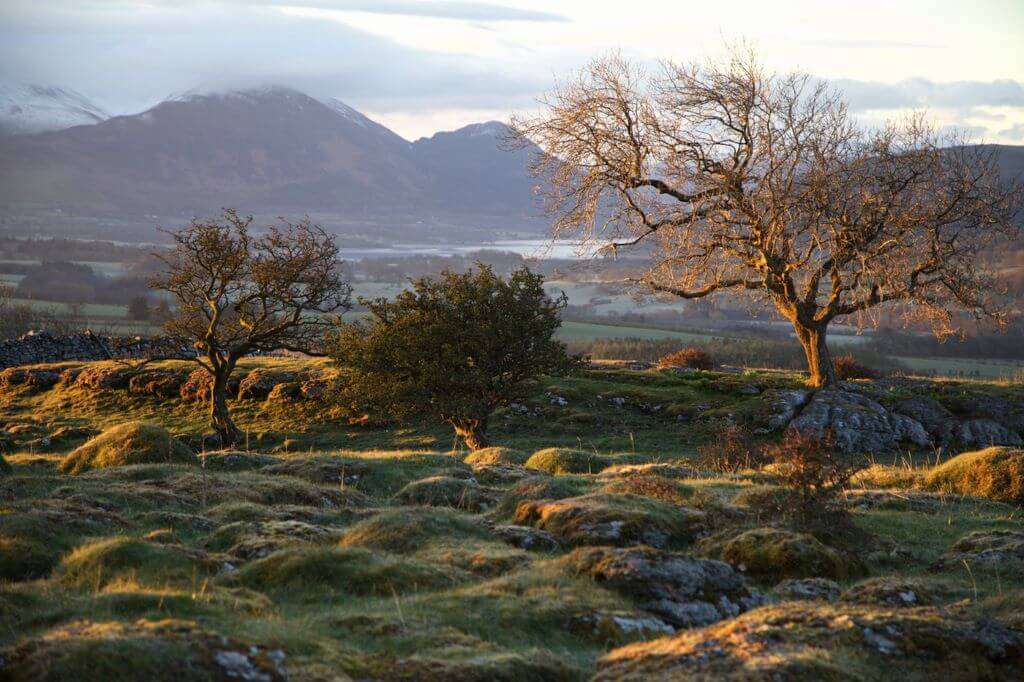
A controversial planning application to re-start quarrying at a highly sensitive Lake District site has seen residents and environmental campaigners digging in for a fight.
They are appealing for the Lake District National Park Authority to dismiss the proposal from Silloth-based D.A. Harrison Ltd which seeks to reopen and expand Clints Crags Quarry, almost 50 years after operations ceased there. They also want the national park to issue a prohibition order preventing any further quarrying on this outlying Wainwright fell near Bassenthwaite.
The campaigners claim the application is unlawful because the right to excavate no longer exists for the site, and that quarrying would cause irreparable damage to the flora and fauna now abundant on the crags, as well as producing impactful air, light and noise pollution.
“Quarrying ceased on the site in the mid-1970s and, because an extension permission was never started, it expired,” said David Roberts, Clints Quarry Action Group chair. “That’s the law. Clints Crags’ quarrying days have long finished and, over the past 50 years, the area has become an important corner of the Lake District National Park and a landscape with protected flora, fauna and limestone pavements.
“It is a place of tranquillity and dark skies with breathtaking panoramic views south to the Cumbrian fells and Bassenthwaite and north to the Solway Firth that visitors and locals enjoy, using public footpaths included in Alfred Wainwright’s Outlying Fells (guide book).”
Natural England, the authority which bears statutory responsibility for the natural environment, has already objected to the proposal, noting the negative effects it will have on the two special conservation areas (SSSI, SAC) at Clints Crags and specifically the protected great crested newt population, which could be one of the larger colonies in the country.
An additional concern is that this attempt to reopen the Clints Crags Quarry could lead to other similar actions in disused quarries across the Lake District, once a significant mining and quarrying region, and how this could affect the World Heritage status currently enjoyed by the Lake District National Park.
Mr Roberts said that when the national park was inscribed as a World Heritage Site, Unesco recommended that the UK Government should “provide assurances that quarrying activities within the property will be progressively down-sized and extraction volumes limited to what is needed for carrying out conservation of the assets supporting the attributes of the property.”
He said the environmental impact of a quarry on the protected landscape in terms of noise, light, vibration and air pollution is likely to be significant. Moreover, residential communities have been established within close proximity to the proposed quarry site that did not exist when it operated in the past.
One of those who has objected to the application is long-standing Blindcrake resident of 40 years, Rachel McConkey, who said in her letter to the national park: “We don’t want a damaging, noisy, dusty, ugly quarry right next to our village, which will destroy the quality of life around here, not to mention remove habitats for rare wildlife.”
Mr Roberts added that there is no economic justification for re-opening the quarry. “Current mineral land banks are more than sufficient for years to come and the supplies of limestone in Cumbria are soon to be supplemented by a significant extension to the large Breedon Moota quarry 1.5km from Clints Crags, and outside the national park.
“Cumbria will have sufficient limestone for its needs and the job market is not an issue as no jobs will be threatened. The national park and its protected environment need not be endangered and Cumbria can keep on track to fulfil its obligations in this climate emergency.”
The campaign is being supported by multi-award-winning broadcaster and photographer Terry Abraham, who said: “Given the UK is one of the most nature depleted countries in Europe and the recent public outpouring of love for the outdoors and accessibility to nature, I was astonished to discover the news about the proposals about the quarry.
“Situated by one of the late Alfred Wainwright’s outlying fells of Lakeland offering an easy walk with sublime views, I’d have thought the re-opening of the quarry stands at total odds with how society views the preservation of the natural environment.”
And renowned Wainwright archivist Chris Butterfield said: “I firmly oppose the re-opening and expansion of Clints Crags Quarry and urge the LDNPA to prohibit quarrying on one of Wainwright’s outlying fells. This position aligns with my dedication to preserving our landscapes and reflects Wainwright’s likely stance.
“Wainwright cherished the Lake District’s natural beauty and tranquillity, qualities threatened by quarrying. He valued biodiversity and the area’s historical richness, recognising its need for protection. The potential harm to wildlife and landscape changes from quarrying would have concerned him.”
The Clints Quarry Action Group has launched a website at: www.clintscrags.co.uk, and a Facebook page https://www.facebook.com/Clints.Crags.
The Reminder contacted the applicant but no response was received.








